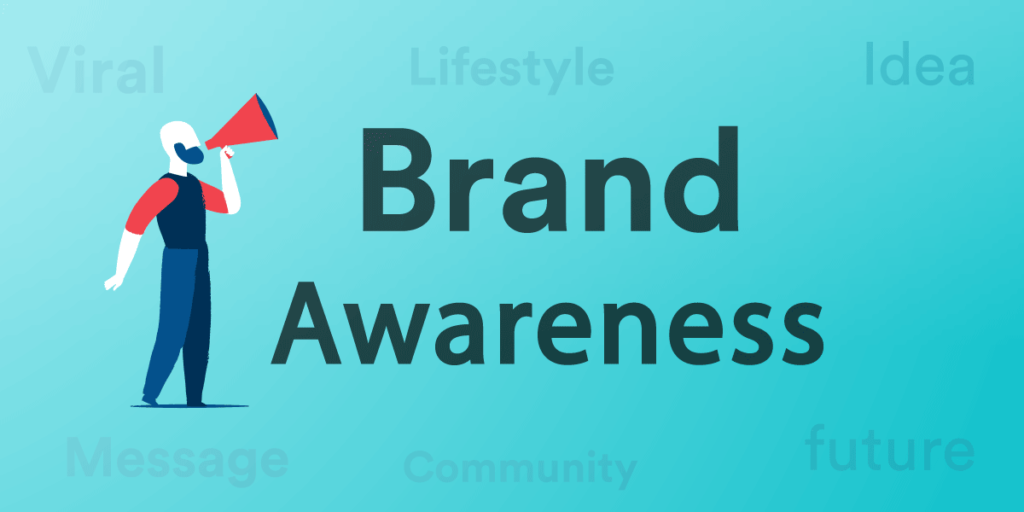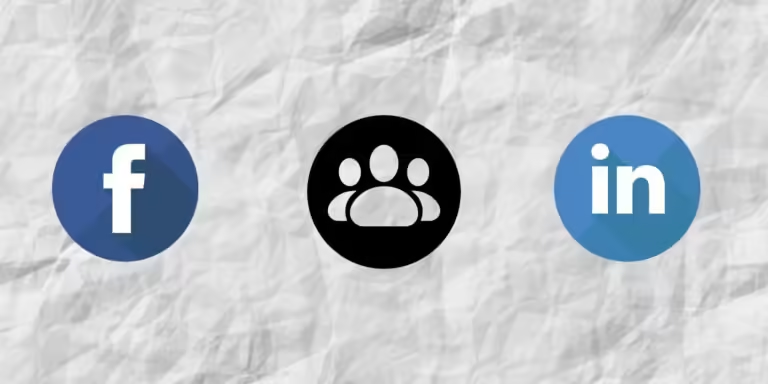10 Advantages of Social Media Advertising for Your Business
In today’s digital age, the marketing landscape has evolved significantly. Gone are the days when businesses solely relied on traditional advertising methods like billboards, print ads, and TV commercials. Enter the era of social media advertising—a game-changer that has revolutionized the way businesses reach and engage with their target audience.
Social media platforms like Facebook, Instagram, LinkedIn, and Twitter have become essential tools for businesses of all sizes. With billions of active users scrolling through their feeds daily, these platforms offer a unique opportunity to connect with potential customers in ways that were previously unimaginable.
But the question remains: Do social media ads benefit your business?
The short answer is a resounding yes! Social media advertising provides a multitude of advantages that can help your business thrive in a competitive market. In this article, we will delve into 10 key benefits of social media advertising and how they can positively impact your business’s growth and success.

I. Increased Brand Awareness
In the bustling world of social media, standing out and making your brand known is crucial for business success. Social media advertising plays a pivotal role in increasing brand awareness by putting your business in front of a large and diverse audience.
1. Reach a Larger Audience
One of the most significant advantages of social media advertising is its unparalleled ability to reach a vast audience. Unlike traditional advertising methods, social media platforms have billions of active users who engage with content daily. By leveraging the reach of platforms like Facebook, Instagram, LinkedIn, and Twitter, your business can tap into a global audience that spans different demographics, interests, and behaviors.
For instance, Facebook alone boasts over 2.8 billion monthly active users. With targeted advertising options, you can tailor your ads to specific groups based on age, location, interests, and even online behavior. This means your brand is not just reaching a large audience but the right audience, increasing the chances of converting viewers into customers.

2. Enhance Brand Recognition
Brand recognition is built through repeated exposure, and social media provides the perfect environment for this. When users consistently see your brand’s ads in their feeds, it reinforces your presence in their minds. Over time, this repeated exposure leads to familiarity, making it more likely that potential customers will remember your brand when they need a product or service you offer.
Consider the concept of the “Rule of Seven,” which suggests that a prospect needs to see or hear your marketing message at least seven times before they take action. Social media ads can easily achieve this level of frequency, ensuring your brand stays top-of-mind.
Additionally, social media platforms allow for creative and engaging ad formats, from image and video ads to carousel and story ads. These formats not only capture attention but also provide opportunities to showcase your brand’s personality and values, further enhancing recognition and connection with your audience.

II. Improved Brand Loyalty
Building a loyal customer base is essential for long-term business success, and social media advertising offers unique opportunities to enhance brand loyalty. By fostering engagement and providing personalized experiences, businesses can create strong, lasting relationships with their customers.
3. Engage with Customers
Engagement is the cornerstone of building brand loyalty. Social media platforms are designed for interaction, allowing businesses to connect with their audience in meaningful ways. Through likes, comments, shares, and direct messages, you can create a two-way communication channel that makes customers feel valued and heard.
For example, running interactive ad campaigns such as polls, quizzes, or contests can significantly boost engagement. Encouraging customers to share their opinions or participate in fun activities not only increases interaction but also strengthens their connection to your brand. Moreover, responding to comments and messages promptly shows that you care about your customers’ feedback and are dedicated to addressing their needs.

4. Personalize Customer Experience
Personalization is a powerful tool in today’s marketing landscape, and social media provides an ideal platform to deliver personalized experiences. By leveraging data and insights from social media interactions, businesses can tailor their advertising efforts to meet the unique preferences and needs of individual customers.
Social media platforms offer advanced targeting options that allow you to create highly personalized ad campaigns. For instance, you can segment your audience based on their previous interactions with your brand, purchase history, or even their engagement with specific types of content. This enables you to deliver relevant and personalized messages that resonate with each customer on a personal level.
Imagine a customer who frequently engages with your posts about a particular product category. You can create targeted ads showcasing new arrivals or special offers in that category, making the customer feel recognized and valued. Personalized ads not only enhance the customer experience but also increase the likelihood of repeat purchases and long-term loyalty.
Additionally, social media allows for personalized communication through direct messages and custom responses. Acknowledging individual customers and addressing them by name in your interactions can go a long way in building a strong, loyal customer base.

III. Higher Conversion Rates
One of the ultimate goals of any advertising campaign is to drive conversions, whether that means making a sale, generating a lead, or encouraging some other valuable action. Social media advertising excels in this area by leveraging targeted advertising and retargeting opportunities to boost conversion rates.
5. Targeted Advertising
One of the standout features of social media advertising is its ability to deliver highly targeted ads. Unlike traditional advertising methods that cast a wide net, social media platforms allow you to pinpoint your ideal audience with remarkable precision. This targeted approach ensures that your ads are seen by individuals who are most likely to be interested in your products or services, thereby increasing the likelihood of conversions.
Platforms like Facebook, Instagram, and LinkedIn offer sophisticated targeting options that go beyond basic demographics. You can target users based on their interests, behaviors, job titles, purchase history, and even life events. For instance, if you’re selling fitness equipment, you can target individuals who have shown an interest in fitness, follow relevant pages, or engage with fitness-related content.
This level of targeting ensures that your advertising budget is spent efficiently, reaching those who are more likely to convert. By showing the right message to the right people at the right time, you can significantly boost your conversion rates.
6. Retargeting Opportunities
Retargeting is a powerful strategy that allows you to reconnect with individuals who have previously interacted with your brand but have not yet converted. Social media platforms provide robust retargeting capabilities, enabling you to keep your brand top-of-mind and encourage users to complete their purchase journey.
When someone visits your website, adds an item to their cart, or engages with your content but doesn’t take the desired action, retargeting ads can remind them of what they left behind. These ads can be tailored to address any potential hesitations or provide additional incentives, such as discounts or free shipping, to nudge them towards conversion.
For example, if a user visits your online store and browses a specific product but leaves without making a purchase, you can retarget them with ads showcasing that product, along with customer reviews or limited-time offers. This personalized approach keeps your brand in front of potential customers and encourages them to return and complete their purchase.
Retargeting is highly effective because it focuses on individuals who have already expressed interest in your brand, making them more likely to convert compared to new prospects. By staying engaged with these warm leads, you can significantly improve your conversion rates and maximize the return on your advertising investment.
IV. Boost Leads for Your Business
Generating high-quality leads is a critical objective for many businesses, and social media advertising offers a variety of tools and strategies to achieve this goal. By capturing quality leads and driving traffic to your website, social media ads can significantly enhance your lead generation efforts.
7. Capture Quality Leads
One of the primary advantages of social media advertising is its ability to capture high-quality leads. Social media platforms provide various ad formats and tools designed specifically for lead generation, allowing businesses to collect valuable information from potential customers.
For instance, Facebook and LinkedIn offer lead generation ads that include pre-filled forms with users’ information, such as name, email address, and phone number. This streamlined process makes it easy for users to express interest in your products or services without having to leave the platform. The result is a higher conversion rate for lead capture, as users are more likely to complete a form that requires minimal effort.
To capture quality leads, it’s essential to create compelling and relevant ad content that resonates with your target audience. Offer valuable incentives such as eBooks, webinars, free trials, or exclusive discounts in exchange for users’ contact information. By providing something of value, you can attract genuinely interested prospects who are more likely to convert into paying customers.
8. Increase Traffic to Your Website
Driving traffic to your website is another key benefit of social media advertising. By directing users from social media platforms to your website, you can increase the chances of generating leads and conversions.
Social media ads can include clear and compelling calls-to-action (CTAs) that encourage users to visit your website. Whether it’s to learn more about a product, read a blog post, or sign up for a newsletter, effective CTAs guide users to take the next step in their customer journey.
For example, Instagram Stories ads can include a “Swipe Up” feature, directing users to a specific landing page on your website. Similarly, Facebook and LinkedIn ads can incorporate “Learn More,” “Shop Now,” or “Sign Up” buttons that drive traffic to targeted pages.
To maximize the impact of your social media ads, ensure that the landing pages you direct users to are optimized for conversions. This means having clear, relevant content, easy navigation, and prominent CTAs on your landing pages. By providing a seamless and engaging user experience, you can increase the likelihood of converting website visitors into leads.
V. Cost-Effective Advertising
When it comes to advertising, budget is always a crucial consideration. Social media advertising stands out as one of the most cost-effective ways to promote your business, offering significant advantages over traditional media.
9. Low Cost Per Click
One of the key benefits of social media advertising is the relatively low cost per click (CPC). Compared to traditional advertising channels like television, radio, or print, social media platforms offer a more affordable way to reach a large audience. This lower CPC means you can drive traffic, generate leads, and achieve conversions without breaking the bank.
For instance, platforms like Facebook and Instagram often have a CPC that can be as low as a few cents, depending on your industry and targeting options. This makes it possible for businesses with even modest budgets to run effective ad campaigns. The ability to set your own budget and control your spending ensures that you can get the most out of your advertising dollars.
Additionally, social media platforms offer a variety of bidding options, such as cost per impression (CPM), cost per engagement (CPE), and cost per acquisition (CPA), allowing you to choose the model that best aligns with your campaign goals and budget.
10. Budget-Friendly Campaigns
Running budget-friendly campaigns on social media requires a strategic approach to maximize your return on investment (ROI). Here are some tips for creating effective and affordable social media ad campaigns:
- Set Clear Objectives: Define your campaign goals clearly, whether it’s increasing brand awareness, generating leads, or driving sales. This helps you focus your budget on achieving specific outcomes.
- Use Targeted Ads: Leverage the advanced targeting options available on social media platforms to ensure your ads reach the right audience. By focusing on users who are most likely to be interested in your products or services, you can improve your ad performance and reduce wasted spend.
- Test and Optimize: Start with a small budget to test different ad creatives, audiences, and bidding strategies. Use the data and insights from these tests to optimize your campaigns, scaling up what works best. Continuous testing and optimization help you get the most out of your budget.
- Leverage Organic Content: Combine your paid ads with organic social media efforts to amplify your reach without additional costs. Engaging posts, stories, and videos can complement your ad campaigns and provide additional touchpoints for your audience.
- Utilize Retargeting: Implement retargeting campaigns to re-engage users who have interacted with your brand but haven’t converted yet. Retargeting typically has a higher conversion rate and can be more cost-effective than targeting new audiences.
- Monitor and Adjust: Regularly review your campaign performance and adjust your budget allocation based on the results. Shifting budget towards high-performing ads and pausing underperforming ones ensures that your spending is always optimized.
VI. Access to In-Depth Analytics
One of the most compelling advantages of social media advertising is the access to in-depth analytics. These analytics provide valuable insights into the performance of your campaigns, enabling you to make data-driven decisions and optimize your strategies for better results.
11. Track Performance
Social media platforms come equipped with robust analytics tools that allow you to track the performance of your ads in real-time. These tools provide a wealth of data, including impressions, clicks, engagement rates, and conversion rates, giving you a comprehensive view of how your ads are performing.
For example, Facebook Ads Manager offers detailed metrics on your ad campaigns, such as reach, frequency, and cost per result. Similarly, Instagram Insights and Twitter Analytics provide data on post engagement, follower growth, and audience demographics.
Tracking performance is crucial for understanding which ads resonate with your audience and which need improvement. By analyzing this data, you can identify trends, determine the most effective ad creatives, and adjust your targeting to enhance performance. This continuous monitoring and adjustment help ensure that your campaigns are always optimized for maximum impact.
12. Measure ROI
Measuring the return on investment (ROI) from social media ads is essential for assessing the success of your campaigns and justifying your advertising spend. Social media analytics tools offer various methods to measure ROI, allowing you to understand the financial impact of your advertising efforts.
Here are some methods for measuring ROI from social media ads:
- Conversion Tracking: Most social media platforms provide conversion tracking tools that allow you to track specific actions taken by users after interacting with your ads. This could include purchases, sign-ups, downloads, or any other valuable actions. By attributing these conversions to your ad spend, you can calculate the ROI of your campaigns.
- Google Analytics Integration: Integrating your social media campaigns with Google Analytics provides a more comprehensive view of your ROI. By setting up goals and tracking conversions, you can measure the direct impact of your social media ads on your website’s performance. Google Analytics also allows you to analyze user behavior, such as time on site and pages per session, to gauge the quality of traffic driven by your ads.
- Cost per Acquisition (CPA): Calculating the cost per acquisition helps you understand how much you are spending to acquire a new customer. By comparing the CPA with the lifetime value of a customer, you can determine the profitability of your campaigns.
- Return on Ad Spend (ROAS): ROAS is a metric that measures the revenue generated from your ad spend. It is calculated by dividing the revenue by the cost of the ads. A higher ROAS indicates a more profitable campaign.
VII. Flexibility and Customization
Social media advertising stands out for its flexibility and customization options, allowing businesses to adapt their campaigns based on performance data and take advantage of various ad formats to achieve their marketing goals.
13. Adaptable Campaigns
One of the greatest strengths of social media advertising is the ability to adapt campaigns in real-time. Unlike traditional advertising methods, which often require a significant upfront investment and long lead times, social media ads can be quickly modified to respond to performance data and changing market conditions.
For example, if you notice that a particular ad is not performing as well as expected, you can immediately tweak the creative, adjust the targeting, or change the budget allocation. This agility allows you to optimize your campaigns on the fly, ensuring that your advertising dollars are always being used effectively.
Moreover, social media platforms provide features such as A/B testing, which allows you to compare different versions of your ads to see which performs better. By continuously testing and refining your campaigns, you can identify the most effective strategies and maximize your return on investment.
14. Various Ad Formats
Social media platforms offer a wide range of ad formats, providing businesses with the flexibility to choose the best format for their objectives and audience. Here are some of the most popular ad formats available:
- Image Ads: Simple yet effective, image ads are a staple of social media advertising. They are ideal for showcasing products, promoting events, or sharing brand messages with eye-catching visuals.
- Video Ads: Video ads are highly engaging and can convey more information than static images. They are perfect for storytelling, product demonstrations, and capturing the viewer’s attention with dynamic content.
- Carousel Ads: Carousel ads allow you to showcase multiple images or videos within a single ad. This format is excellent for highlighting different product features, showcasing a range of products, or telling a story in a sequential manner.
- Story Ads: Popular on platforms like Instagram and Facebook, story ads appear between users’ stories and offer a full-screen, immersive experience. They are ideal for capturing attention with quick, engaging content.
- Slideshow Ads: Slideshow ads use a series of images or short video clips to create a lightweight video ad. They are an excellent option for businesses with limited resources for video production.
- Collection Ads: Collection ads feature a cover image or video followed by several product images. When users tap on the ad, they can browse a catalog of products without leaving the social media platform, making it easier to shop and explore.
- Lead Ads: As mentioned earlier, lead ads are designed to collect user information directly within the social media platform. They simplify the lead generation process by allowing users to fill out forms without leaving the app.
By leveraging these diverse ad formats, businesses can create highly customized and engaging ad campaigns that resonate with their target audience. The flexibility to experiment with different formats and tailor ads to specific goals ensures that social media advertising remains a versatile and powerful tool for marketers.
VIII. Competitive Advantage
In the fast-paced world of digital marketing, gaining a competitive edge is crucial for business success. Social media advertising provides businesses with powerful tools and strategies to stay ahead of competitors and receive real-time feedback, allowing for continuous improvement and adaptation.
15. Stay Ahead of Competitors
One of the key advantages of social media advertising is the ability to stay ahead of competitors by leveraging advanced targeting, creative ad formats, and data-driven strategies. Here are some ways to use social media ads to outpace your competition:
- Innovative Ad Formats: Utilize the latest ad formats and features offered by social media platforms to create engaging and visually appealing campaigns. For example, Instagram Reels and Stories, Facebook Carousel Ads, and LinkedIn Sponsored Content can help you stand out and capture the attention of your audience.
- Advanced Targeting: Take advantage of the sophisticated targeting options available on social media platforms to reach specific audience segments that your competitors might be overlooking. By targeting niche markets or underserved demographics, you can carve out a unique position in the market.
- Competitive Analysis: Use social media analytics tools to monitor your competitors’ advertising strategies. Analyzing their ad creatives, engagement rates, and audience responses can provide valuable insights into what works and what doesn’t. You can then refine your own strategies to stay ahead.
- Seasonal and Trend-Based Campaigns: Stay on top of industry trends and seasonal opportunities to create timely and relevant ad campaigns. By being quick to adapt to changes in the market, you can capitalize on emerging trends and capture the interest of your audience before your competitors do.
16. Real-Time Feedback
One of the most significant benefits of social media advertising is the ability to receive real-time feedback on your ad campaigns. This instant feedback loop allows businesses to make data-driven decisions and optimize their strategies on the fly.
- Immediate Performance Metrics: Social media platforms provide real-time metrics such as click-through rates, conversion rates, and engagement levels. By monitoring these metrics, you can quickly identify which ads are performing well and which need adjustments.
- Customer Sentiment Analysis: Social media ads often generate comments, likes, and shares, providing valuable insights into customer sentiment. Analyzing this feedback can help you understand how your audience perceives your brand and ad content, allowing you to make necessary improvements.
- A/B Testing: Conduct A/B tests to compare different versions of your ads and determine which performs better. Real-time feedback allows you to quickly identify the most effective ad creatives, headlines, and calls-to-action, ensuring your campaigns are always optimized.
- Rapid Response to Market Changes: Social media’s real-time nature allows you to respond swiftly to changes in the market or customer behavior. Whether it’s a sudden shift in consumer preferences or a new competitor entering the market, you can adjust your ad strategies to stay relevant and competitive.
IX. Improved Customer Insights
Understanding your customers is key to creating effective marketing strategies and driving business success. Social media advertising provides a wealth of data and insights that can help you gain a deeper understanding of customer behavior and preferences, enabling you to tailor your marketing efforts for maximum impact.
17. Understand Customer Behavior
Social media platforms offer extensive analytics and data tracking capabilities that allow businesses to gain valuable insights into customer behavior. By analyzing this data, you can uncover patterns and trends that provide a clearer picture of how your audience interacts with your brand and products.
- Engagement Metrics: Metrics such as likes, comments, shares, and click-through rates help you understand which types of content resonate most with your audience. By identifying the most engaging posts and ads, you can refine your content strategy to focus on what works best.
- Audience Demographics: Social media platforms provide detailed demographic information about your audience, including age, gender, location, interests, and more. This data helps you understand who your customers are and tailor your marketing messages to appeal to specific segments.
- Behavioral Data: Tracking user behavior, such as website visits, time spent on pages, and interactions with specific products, allows you to understand the customer journey and identify key touchpoints. This information is crucial for optimizing your sales funnel and improving the overall customer experience.
18. Tailor Marketing Strategies
The insights gained from social media data enable businesses to tailor their marketing strategies to better meet the needs and preferences of their customers. By leveraging this information, you can create more personalized and effective campaigns that drive higher engagement and conversions.
- Personalized Content: Use customer insights to create personalized content that speaks directly to the interests and preferences of your audience. Personalized ads and posts are more likely to capture attention and drive action, leading to improved campaign performance.
- Segmented Campaigns: Segment your audience based on demographic and behavioral data to deliver targeted campaigns that address the unique needs of different customer groups. For example, you can create separate ad campaigns for first-time visitors, repeat customers, and high-value clients, each with tailored messages and offers.
- Product Recommendations: Use data on customer preferences and purchase history to offer personalized product recommendations. Social media platforms and e-commerce integrations allow you to showcase relevant products to individual users, increasing the likelihood of conversions.
- Feedback Loop: Actively seek feedback from your audience through polls, surveys, and direct interactions. Use this feedback to continuously refine your marketing strategies and address any concerns or preferences expressed by your customers.
X. Scalability and Reach
One of the most powerful aspects of social media advertising is its scalability and extensive reach. Whether you’re a small business looking to grow or a large corporation aiming to expand your market, social media ads can be scaled to meet your needs and reach a vast audience.
19. Expand Market Reach
Social media platforms provide businesses with the tools to expand their market reach far beyond traditional boundaries. With billions of active users worldwide, these platforms offer unparalleled opportunities to connect with potential customers across different regions, demographics, and interests.
- Global Audience: Social media platforms like Facebook, Instagram, and LinkedIn have users from all over the world. By creating ads that target specific countries or regions, businesses can enter new markets and reach international audiences without the need for a physical presence.
- Localized Campaigns: To effectively reach diverse markets, businesses can create localized ad campaigns that cater to the specific preferences, languages, and cultural nuances of different regions. This approach helps in building stronger connections with local audiences and improving the effectiveness of ad campaigns.
- Interest-Based Targeting: Social media platforms allow businesses to target users based on their interests and behaviors. By identifying and targeting niche markets or specific interest groups, businesses can reach audiences that are highly relevant to their products or services.
20. Scale Campaigns Easily
One of the significant advantages of social media advertising is the ease with which campaigns can be scaled. Whether you start with a small budget and gradually increase it or launch a large-scale campaign from the beginning, social media platforms offer flexibility and control over your ad spend.
- Budget Control: Social media platforms allow businesses to set daily or lifetime budgets for their ad campaigns, providing complete control over how much is spent. This flexibility makes it easy to scale campaigns up or down based on performance and available resources.
- Performance-Based Scaling: By continuously monitoring the performance of your ad campaigns, you can identify high-performing ads and allocate more budget to them. This performance-based scaling ensures that your advertising dollars are directed towards the most effective strategies, maximizing your return on investment.
- Automated Tools: Many social media platforms offer automated tools and features that make scaling campaigns easier. For example, Facebook’s automatic bid adjustment and Instagram’s automated targeting options can help optimize ad delivery and reach larger audiences without manual intervention.
- Lookalike Audiences: To expand your reach, you can create lookalike audiences based on your existing customer data. These audiences consist of users who share similar characteristics and behaviors with your current customers, making them more likely to be interested in your products or services. Using lookalike audiences allows businesses to scale their campaigns efficiently and reach new potential customers who are likely to convert.
Conclusion
Social media advertising has transformed the way businesses connect with their audience, providing numerous advantages that contribute to growth and success in today’s competitive landscape. By leveraging the unique features of social media platforms, businesses can enhance their brand presence, engage with customers, drive conversions, generate quality leads, and gain valuable insights—all while maintaining cost-effectiveness and scalability.
Recap of Key Points
To summarize, the key advantages of social media advertising discussed in this article include:
- Increased Brand Awareness: Social media ads help reach a larger audience and enhance brand recognition through repeated exposure.
- Improved Brand Loyalty: Engaging with customers and providing personalized experiences builds stronger, long-lasting relationships.
- Higher Conversion Rates: Targeted advertising and retargeting opportunities lead to higher conversion rates.
- Boost Leads for Your Business: Capturing quality leads and driving traffic to your website.
- Cost-Effective Advertising: Low cost per click and budget-friendly campaigns make social media ads affordable and efficient.
- Access to In-Depth Analytics: Track performance and measure ROI with robust analytics tools.
- Flexibility and Customization: Adaptable campaigns and various ad formats allow for tailored marketing strategies.
- Competitive Advantage: Stay ahead of competitors and receive real-time feedback to optimize strategies.
- Improved Customer Insights: Gain valuable insights into customer behavior and preferences to tailor marketing efforts.
- Scalability and Reach: Expand market reach and scale campaigns easily to meet business goals.
Next Steps for Implementing Social Media Ads
For businesses looking to harness the power of social media advertising, here are some actionable steps to get started:
- Define Your Objectives: Clearly outline your advertising goals, whether it’s increasing brand awareness, generating leads, or driving sales.
- Choose the Right Platforms: Select the social media platforms that best align with your target audience and business objectives.
- Create Engaging Content: Develop compelling ad creatives that resonate with your audience and encourage interaction.
- Set a Budget: Determine your advertising budget and allocate it based on your campaign goals and expected ROI.
- Utilize Targeting Options: Leverage the advanced targeting features of social media platforms to reach the right audience.
- Monitor and Optimize: Continuously track the performance of your campaigns, making adjustments as needed to improve results.
- Experiment with Ad Formats: Test different ad formats to find the most effective ones for your audience and objectives.
- Engage with Your Audience: Foster engagement by responding to comments, messages, and feedback promptly.
- Analyze and Learn: Use the insights gained from your campaigns to refine your strategies and improve future efforts.
By following these steps, businesses can effectively implement social media advertising and unlock its full potential to drive growth and success.






